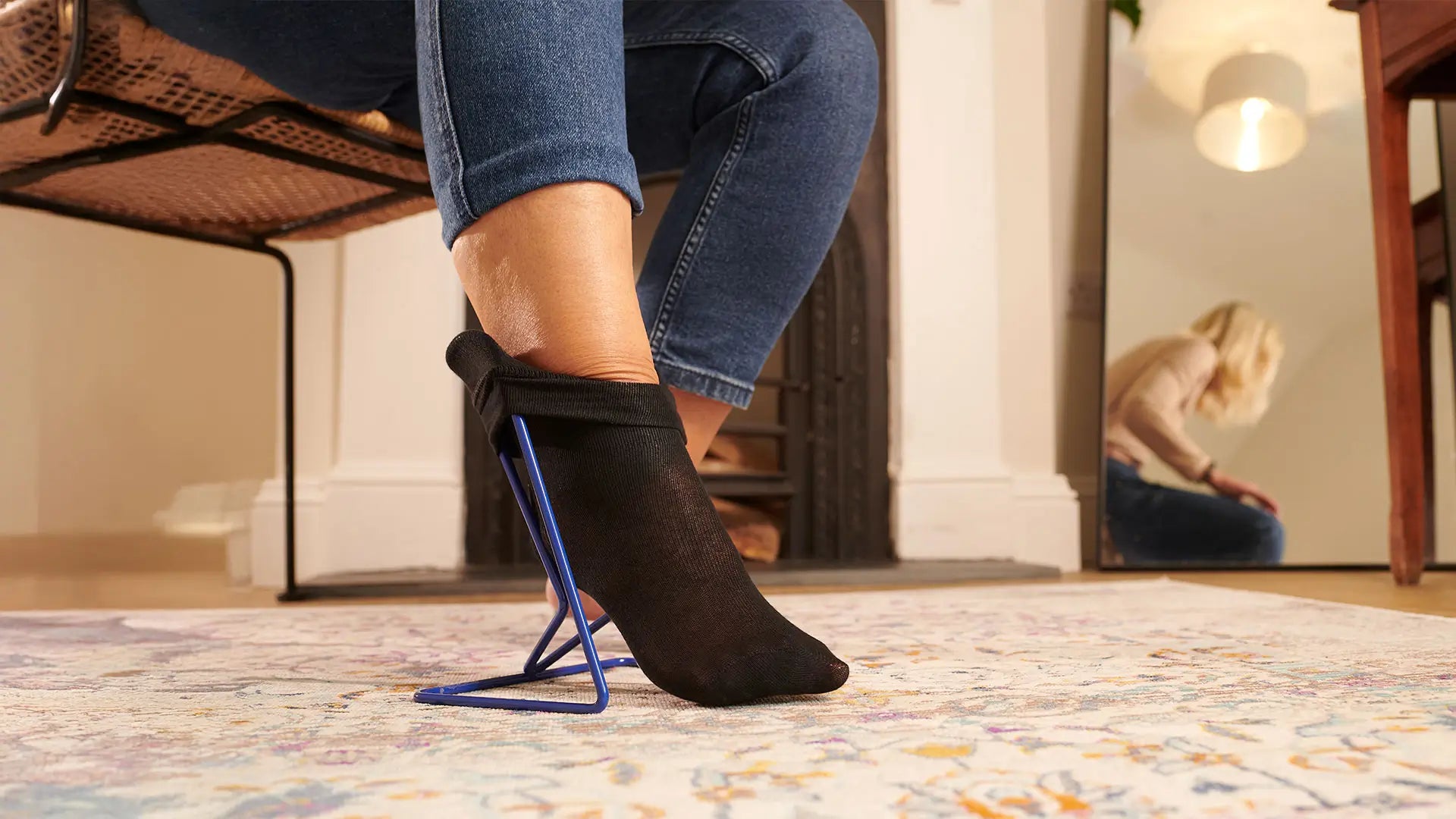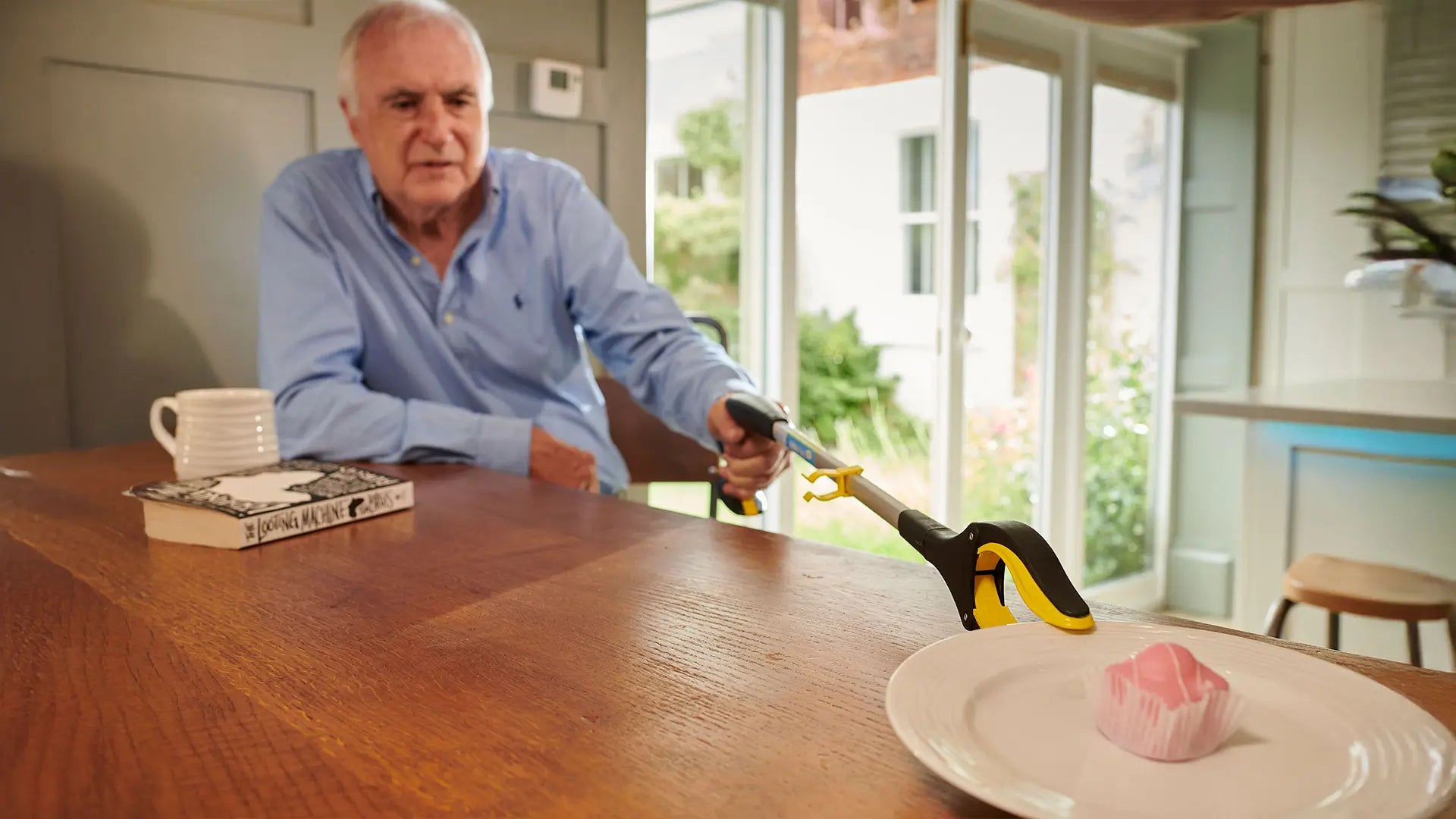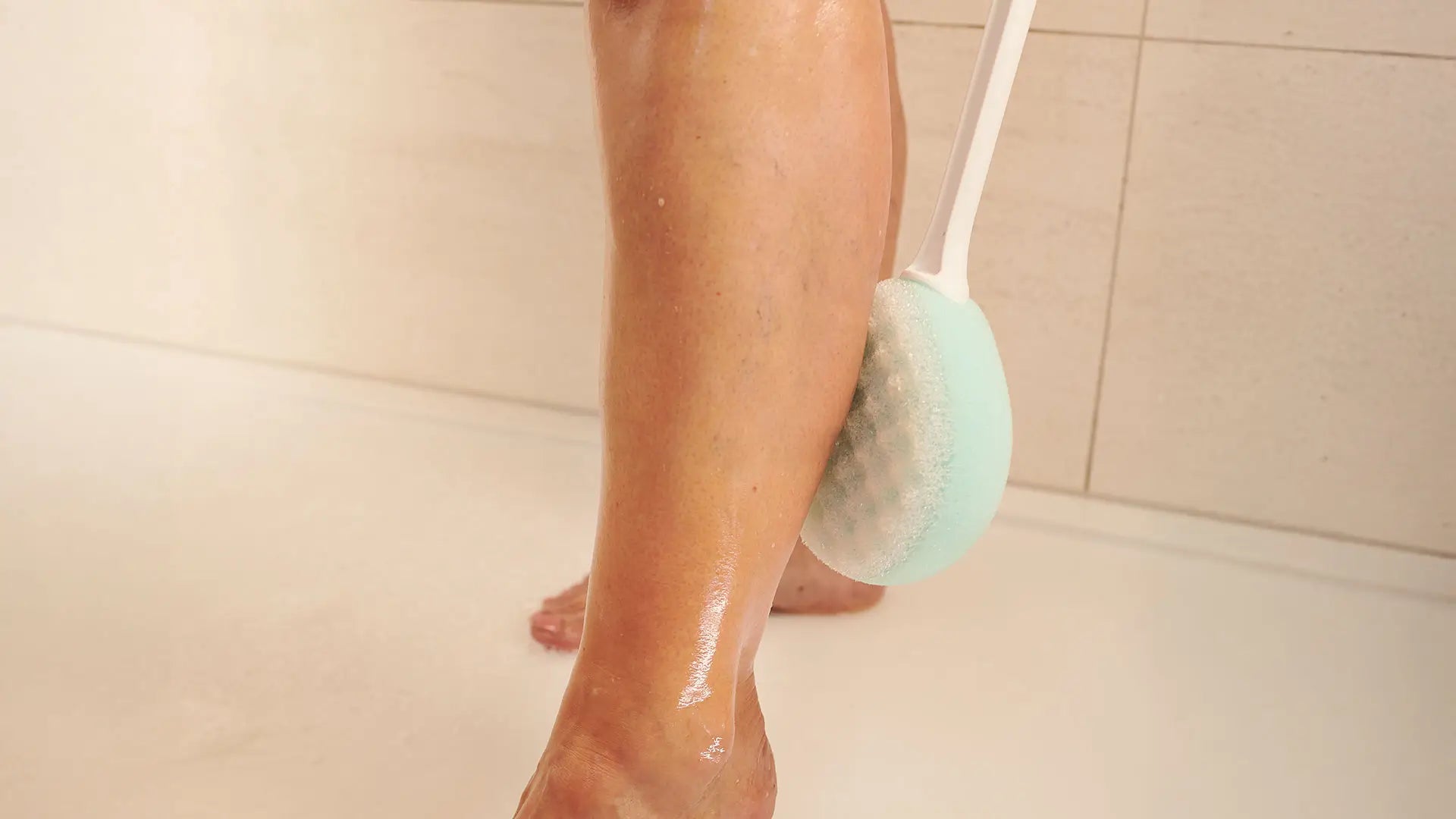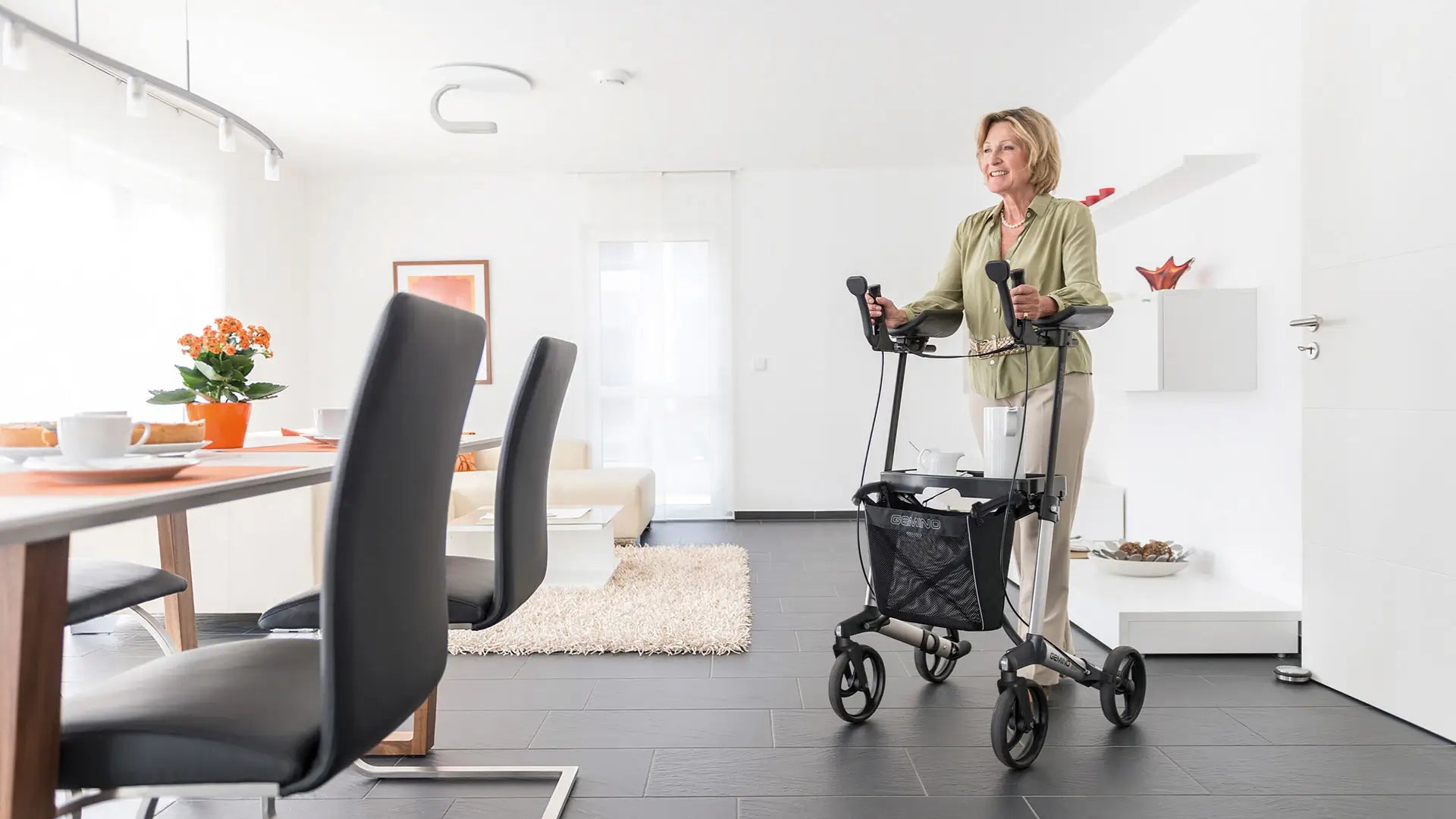Doctors recommend wearing compression stockings for a variety of medical problems. Compression stockings compress your legs to increase circulation up and down the legs and feet. They are commonly used to prevent and treat conditions such as DVT (deep vein thrombosis, a blood clot deep in the vein), varicose veins and venous leg ulcers. You may also be advised to wear them after surgery.
Putting socks on can be a real struggle, and compression stockings are no easier. You might already be using a sock aid, but these will not work with compression stockings.
If your doctor has recommended that you begin wearing compression stockings, it’s really important that you understand why, how to put them on – or ask someone to help you – and how to look after them.
5 benefits of wearing compression socks
- Improve venous return
- Prevent venous blood from pooling in the legs
- Decrease the risk of blood clots
- Reduce leg swelling
- Improve symptoms of vein disease
Deep vein thrombosis (DVT) is a condition that occurs when blood clots form in veins deep inside your body. These clots can occur anywhere, but often affect the lower legs or thighs.
Symptoms of DVT include swelling, pain or tenderness, and skin that may feel warm to the touch.
DVT can happen to anyone, but you have a greater risk of developing it after surgery or trauma. Being overweight and smoking are also risk factors.
Since DVT can lead to serious complications, your doctor may recommend compression stockings to reduce swelling and improve blood flow to your heart and lungs. If you’re not familiar with how these stockings work, here’s what you need to know.
How do compression stockings work?
Compression stockings are like socks or tights, but they’re made from a different material and serve a medical purpose.
While ordinary stockings may be worn for style or to protect your legs, compression stockings are made from elastic fabric designed to fit tightly around the ankles, legs and thighs. They are tighter around the ankle and less tight around the calves and thighs.
The pressure created by the stockings pushes fluid up the leg, which allows blood to flow freely from the legs to the heart. Compression stockings not only improve blood flow, but also reduce swelling and pain. They are particularly recommended for the prevention of DVT because the pressure stops blood from pooling and clotting.
Wearing compression stockings
If you experience leg trauma or have surgery, your doctor may prescribe compression stockings for use during your hospital stay or at home. You can also buy them from a pharmacy or medical supply store.
These stockings can be worn after a DVT diagnosis to alleviate discomfort and swelling. They may also be worn as a preventative measure.
5 do’s
- Do carefully measure your legs to ensure you get the right size. You want to make sure they provide the medical benefit and are comfortable enough to wear all day.
- Do look after them – a gentle wash after each day’s wear is recommended, not only for hygiene but to prolong their use. Washing helps them keep their shape. Check the instructions supplied with your stockings for recommended cleaning products.
- Do put your stockings on first thing in the morning, every day. Legs and feet are less swollen at the beginning of the day, and you will get the maximum benefit as you stay active.
- Do ask for help – compression stockings are tight, so if you find it hard to put them on, or bending down is a challenge, consider asking a partner or friend to assist. Your stockings may come with a silky sleeve (a stocking donner), or you can buy different gadgets to make the task easier for you or a carer. Stretching the stocking over the foot is often the biggest challenge. Avoid snagging them with fingernails or rings. Frames with extra grip can make it quicker and easier. Use whichever method is safest for you – seated, standing or lying down.
- Do replace them when they start to wear out – every 3–6 months is typical. The elastic will stretch, and sagging is a good indicator that it’s time to change them.
5 don’ts
- Don’t roll them up to put on or take off. This will create a tight band which can restrict circulation and be painful.
- Don’t wear them at night, unless your doctor has specifically advised it. When lying down, your body is in a neutral position that supports blood flow. Keeping your legs elevated with a couple of pillows can also help.
- Don’t use harsh chemicals to wash the stockings, as these can damage the skin and the material.
- Don’t apply lotions, creams or oils to your skin before putting them on. Apply moisturiser in the evening instead. A little talc in the morning can make them smoother to pull up.
- Don’t alter or cut the stockings. They are graduated – compression is strongest at the foot and ankle, then gradually lessens up the leg. Cutting them can cause them to roll up and become uncomfortable.
Putting on compression stockings is not easy. Check out our range of compression stocking frames.






Share:
Keeping Mobile at Home
Maintaining personal care routines